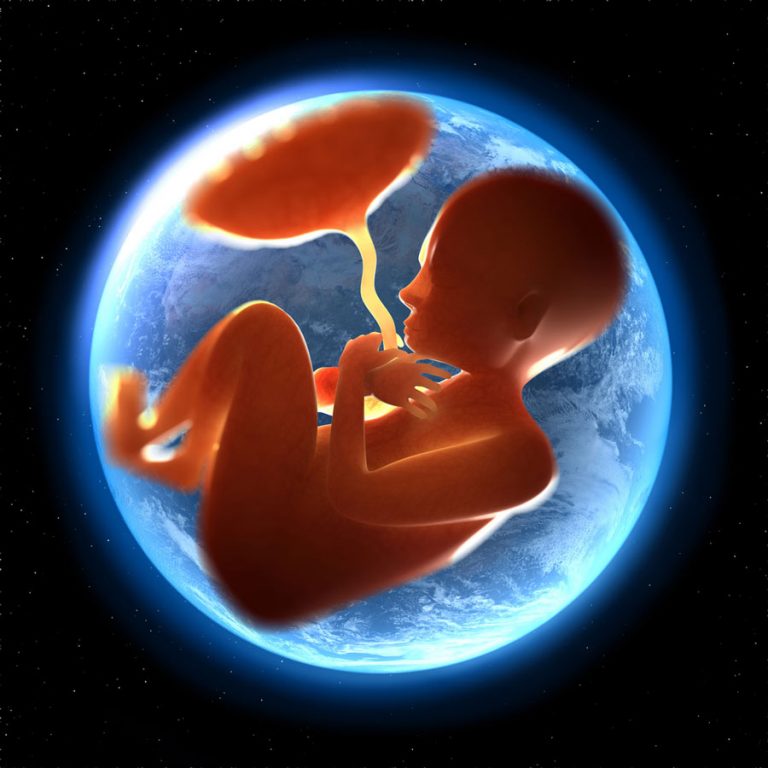Human existence has long invited profound contemplation, leading to myriad philosophical inquiries into the nature of life and our place within it. One intriguing analogy posits that life on Earth resembles the experience of gestation within a womb. This perspective, rooted in Bahá’í teachings, encourages a transformative re-evaluation of our life experiences, our interconnectedness, and the ultimate purpose of our journey on this planet. Through this lens, we can explore several dimensions that illustrate this metaphorical correlation.
First and foremost, the concept of a womb evokes notions of development and potential. Within the confines of the womb, a fetus undergoes a significant metamorphosis, transforming from a single fertilized cell into a complex organism. Similarly, human life on Earth can be perceived as a phase of spiritual development, where individuals are nurtured and prepared for the next stage of existence. Just as a fetus receives sustenance and protection, humans grow and evolve through the experiences and challenges presented in life, which contribute to our spiritual maturation.
This developmental process emphasizes the importance of nurturing environments. In gestation, the womb acts as a safe haven, allowing for growth unrestricted by external influences. Analogously, the Earth serves as a nurturing ground for human beings, providing opportunities for love, learning, and development. The interstitial space of life functions similarly to a womb, offering essential lessons that guide individuals through personal and collective evolution. Each experience, whether joyous or tumultuous, contributes to the rich tapestry of human development.
Furthermore, the Bahá’í teachings assert that this earthly existence is not an end in itself but rather a preparatory stage for a higher reality. Just as the womb transitions its occupant to the outside world, so too does life on Earth serve as a precursor to spiritual realms beyond our immediate comprehension. This inherent promise of transcendence encourages individuals to cultivate a sense of purpose and intentionality in their lives. It suggests that our struggles and accomplishments hold significance far beyond temporal confines, inviting a deeper exploration of spiritual truths.
Another compelling aspect of this metaphor is the theme of interconnectedness. Within the womb, a fetus is inextricably linked to its mother, relying on her for sustenance, oxygen, and protection. This relationship highlights a fundamental principle of unity found in Bahá’í teachings: the oneness of humanity. Our existence on Earth similarly points to interdependence, both among individuals and between humanity and the natural world. Recognizing this interconnectedness fosters compassion and empathy, urging individuals to cultivate harmonious relationships with one another and with the planet itself.
Moreover, the analogy of a womb prompts consideration of the boundaries that shape our earthly existence. Just as a fetus is enveloped in an environment that limits its physical reach, humans often find themselves confined by societal, psychological, and cultural constraints. These limitations can distort perceptions, impair relationships, and stifle spiritual growth. However, Bahá’í teachings encourage individuals to recognize these boundaries as opportunities for intellectual and spiritual expansion. By challenging preconceived notions and embracing diversity of thought, individuals can transcend conventional limitations and embark on a journey toward greater wisdom and understanding.
Additionally, the concept of preparation extends to the notion of spiritual readiness. In the womb, preparation culminates in birth—a threshold marking the transition from one phase of being to another. This inspires a reflection on the importance of spiritual preparedness. The journey of life on Earth, akin to gestation, demands ongoing reflection, prayer, and action to ensure that individuals are equipped for the transformation that awaits them. By engaging in self-improvement and altruistic endeavors, individuals foster a readiness for the spiritual realities that lie ahead, thereby illuminating the path to higher consciousness.
Historically, many cultures have echoed the notion of life as a journey of spiritual gestation. Ancient philosophies often integrated metaphors of birth and rebirth to illustrate the cyclical nature of existence. In the context of Bahá’í perspectives, this historical awareness reinforces the continuity of the human experience, linking past teachings with contemporary understandings of life’s purpose. Drawing from these insights enriches the Bahá’í narrative, affirming the validity of the womb metaphor as a means of uncovering deeper truths about our existence.
Additionally, embracing this analogy allows for a re-examination of personal challenges and triumphs. In recognizing the womb-like nature of life, individuals can approach adversities as opportunities for spiritual growth. The trials faced on Earth can be reframed as moments of crucible—intense experiences that forge resilience, compassion, and understanding. This transformative shift in perspective encourages individuals to view their life’s journey through a lens of curiosity and exploration, probing beneath the surface of superficial challenges to unveil the profound lessons concealed within.
Ultimately, the metaphor of life as a womb gracefully captures the essence of human existence as a transient yet pivotal experience. It invites individuals to survey their lives through a broader lens, recognizing the cultivation of potential, the bonds of interconnectedness, and the inevitability of spiritual transformation. By contemplating life within this context, a newfound appreciation for the myriad experiences that shape our journey emerges. Armed with this perspective, every individual can engage more meaningfully with the world around them, embracing the sacred responsibility of nurturing not only their own growth but also the growth of others as we collectively ascend to higher realms of consciousness.
In conclusion, the Bahá’í teachings present an invaluable lens through which to engage with the divine narrative of existence. The womb analogy encapsulates the profound potential inherent in human life, fostering a richer understanding of our purpose and interconnectedness. As we navigate this earthly journey, embracing our role as stewards of each other’s growth becomes paramount, allowing us to contribute to the unfolding tapestry of humanity’s spiritual evolution.
